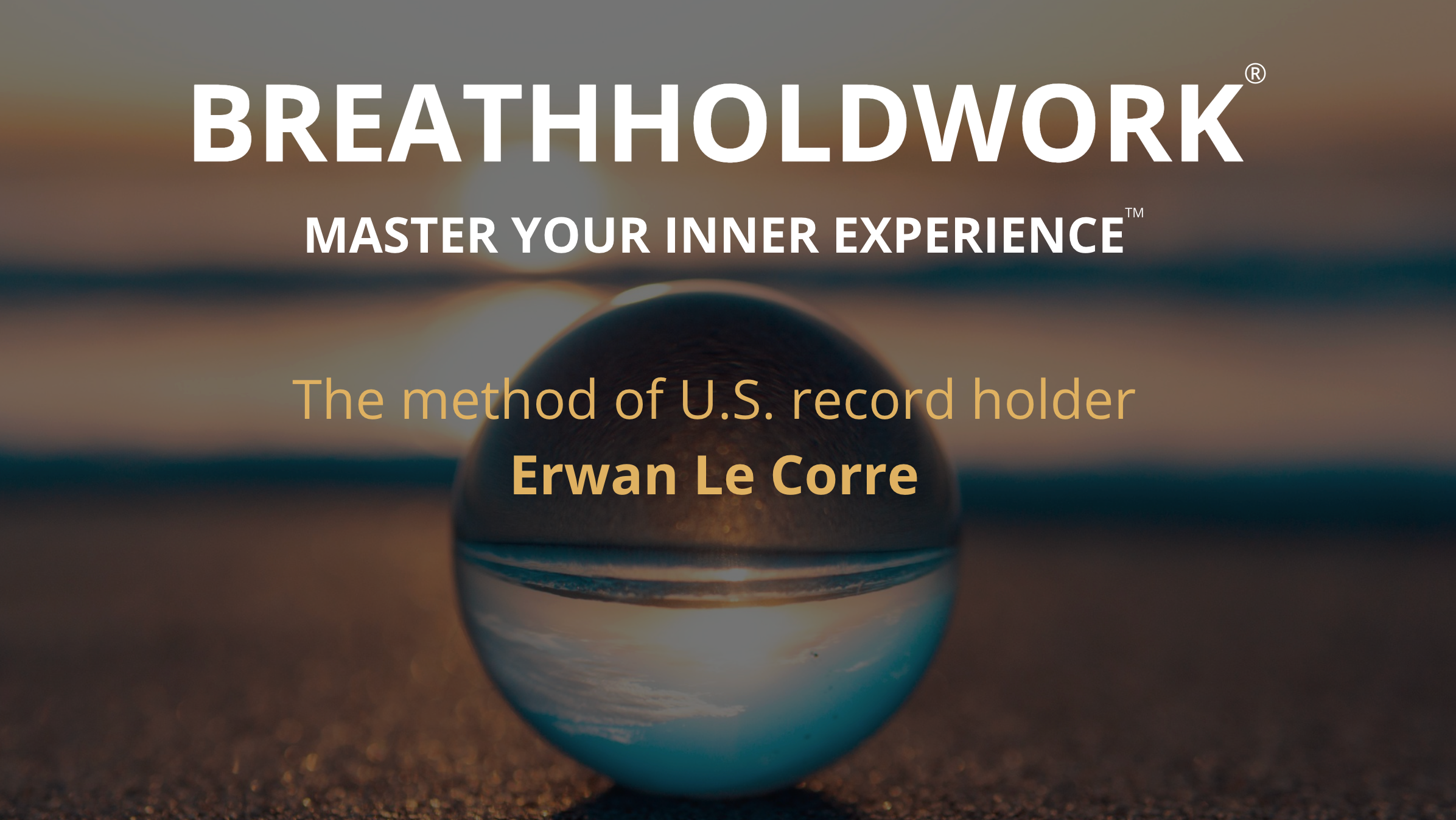The Respiratory Paradox: How Holding Your Breath Strengthens the Muscles That Breathe

At first glance, breath-holding and breathing training seem like opposites — one stops the breath; the other strengthens it.
But beneath the surface, they share the same biological foundation.
Both train the respiratory muscles, both can reshape the nervous system, and both build a deeper command of the boundary between physiology and will.
What recent science is showing — and what elite freedivers have known for decades — is that breath-holding itself can serve as one of the most powerful forms of respiratory muscle conditioning.
Breath-Holding as Isometric Strength Training
Every long apnea is a war between reflex and restraint.
When ventilation is paused, oxygen lowers, and carbon dioxide rises, the brainstem commands “breathe,” the diaphragm and upper respiratory muscles contracts against a closed glottis — an isometric contraction under hypoxic stress.
It’s the respiratory equivalent of lifting heavy weight without moving the bar.
This repeated interna...
Curiosity Kills the Fish: A Diver’s Calm Beneath the Waves

It is in the aquatic world reigning beneath the surface of the ocean off Yelapa, Mexico, that in 2020 I discovered a truth about breath-holding that would shape my life and, soon, my forthcoming book. This story, destined for a chapter I’m keeping confidential for now, unveils how stillness and intention - born from spearfishing - unlocked a resilience far beyond traditional relaxation practices. Today, I invite you into this underwater world, blending personal narrative with science to build anticipation for what’s to come.
The Hunt Beneath the Waves
Living in Yelapa, a jungle-fringed village where the sea dictates survival, I turned to spearfishing to feed my family fresh-caught fish. Each dive was a dance with the unknown, my body submerged, breath held, waiting behind a rock for “huachinango” (red snapper) or grouper to glide into range. The challenge wasn’t just holding my breath, it was remaining as still as possible. Fish sense everything: a twitch of a fin, a ripple of ...
The Surprising Link Between a Sea Worm and Breath-Holding

In the coastal labs of Brittany, France, a surprising hero is emerging from the sea: the lugworm, Arenicola marina.
Hemarina, a startup founded in 2007 by marine biologist Franck Zal, has turned this unassuming worm’s unique hemoglobin into a game-changer medical product, offering new possibilities for health and resilience. This isn’t just a medical curiosity; it’s a lifeline for people facing oxygen-related challenges, and it sheds light on the power of our own physiology through BreathHoldWork.
The lugworm’s hemoglobin is a natural wonder, designed to thrive in low-oxygen mudflats. It carries oxygen far more effectively than human hemoglobin, making it a perfect fit for medical breakthroughs. Since 2017, Hemarina has moved from early experiments to real-world use, starting with organ transplants. A 2019 trial showed that their product (HEMO2life®) helped kidneys recover better, cutting delayed function by 25-30% and inflammation by up to 35%, according to the American Journal of T...
Shattering Breath-Hold Personal Best in 40 Minutes: The CO2 Tolerance Myth Exposed

A Poolside Experiment That Changed Everything
In the sun-baked village of Yelapa, Mexico, where the jungle spills into the sea and time seems to stretch like taffy, I found myself playing guinea pig to my own curiosity. It was 2020, and I had been living there for a while, spearfishing for my family meals and pushing my breath-holds to extend my underwater hunts. The ocean was my proving ground, each dive a test of how long I could linger on the bottom, waiting for "huachinango," the Mexican name for red snapper, or grouper to drift into range. But that week, my focus shifted from the waves to a small group of clients: three high-powered executives who had flown in for MovNat training. They were the kind of guys who crushed boardrooms but confessed to crumbling under stress, insomnia, anxiety, the works.
After two days of crawling through sand on the beach, balancing on logs by the river, and scaling vines in the jungle, dinner brought a new topic as the sun dipped low, pain...
Neural Pruning: How the Nervous System Unlearns What No Longer Serves

There is a widespread, persistent, and deeply misleading misconception that learning and improvement are exclusively about accumulating knowledge or skills, as if the brain were a large warehouse where more content automatically means more capacity and, therefore, more competence.
The more you add, the better?
That’s not always how neurological optimization works.
In reality, the opposite is also true.
The nervous system does not grow solely by accumulation. It evolves through selection.
Selection isn’t only about what needs to be added; it’s also about what shouldn’t be kept.
When the brain identifies a neurological trait and behavior as desirable because it supports a survival strategy, it will work on making it a swift response.
It will favor and strengthen that response by either forming new neural connections or by reinforcing existing ones.
But an efficient way to prioritize this new behavior is to start neglecting and weakening the opposing tendency simul...
Rewiring the Stress Circuit: The Neuroscience of Breath-Hold Resilience

In the reality of modern life—marked by uncertainty, overstimulation, and chronic stress—the ability to self-regulate has become essential. Yet the dominant narrative continues to treat resilience as either a personality trait or a vague byproduct of general wellness. BreathHoldWork (BHW) proposes something different: that resilience is not a trait, but a skill. And like any skill, it can be built, refined, and stabilized through deliberate training of the nervous system under internal physiological load.
A 2021 review published in Translational Psychiatry (Roeckner et al.) draws together longitudinal neuroimaging studies that point to a functional brain circuit governing resilience. This circuit involves the prefrontal cortex (PFC), the hippocampus, and the amygdala. Each plays a distinct role: the PFC evaluates threat and modulates emotional response; the hippocampus integrates contextual memory; the amygdala detects perceived danger. Together, they shape how an individual exp...
How BreathHoldWork Saved My Life When Nothing Else Worked

Six Years of Suffering and No Answers
In late 2021 and early 2022, Erwan held seven live, online BreathHoldWork Meditation Programs. Hundreds of students from all over the world signed up and attended, with dozens writing testimonials praising the BreathHoldWork method and Erwan's teaching. (Read them on our testimonial page.)
We were recently contacted by one alumnus of the program, Andrew Johnson, whose BreathHoldWork testimonial stood out from the crowd. Andrew was a student in Erwan's program in April of 2022. Below is his story.
"To be frank, BreathHoldWork Meditation saved my life."
For the past six years, I’d been dealing with debilitating health issues that took me from a vibrant and healthy young man with passions and dreams to a burned-out, broken shadow of a person struggling to walk up the single flight of stairs to my apartment. I was so exhausted that I dreaded getting home every day and having to walk up to my apartment, or God forbid doing such demanding tasks as
...
Stillness Under Pressure: The Real Training Zone

By Erwan Le Corre
Founder, BreathHoldWork®
3x U.S. National Record Holder in Static Apnea
"Meditation becomes more effective when it happens within a breath-hold.
Not before it. Not after it. Within it."
Erwan Le Corre
Why Meditation Feels So Hard
Most people separate meditation from breathwork.
They either practice a breathwork exercise or meditate.
Doing breathwork is often preferred because it provides a single point of focus: your breath.
Mentally, that makes things easy. It’s similar to when one exercises, because when you do, you’re likely to focus on your physical sensations rather than paying attention to your mind.
Doing breathwork feels like a mental and emotional wellness practice without the challenge of meditation.
But why is meditation such a challenge when all you’ve got to do, at least from the perspective of conventional meditation, is to sit still and watch thoughts rise and pass?
The explanation is simple and resides in the answer to the following question: w...

